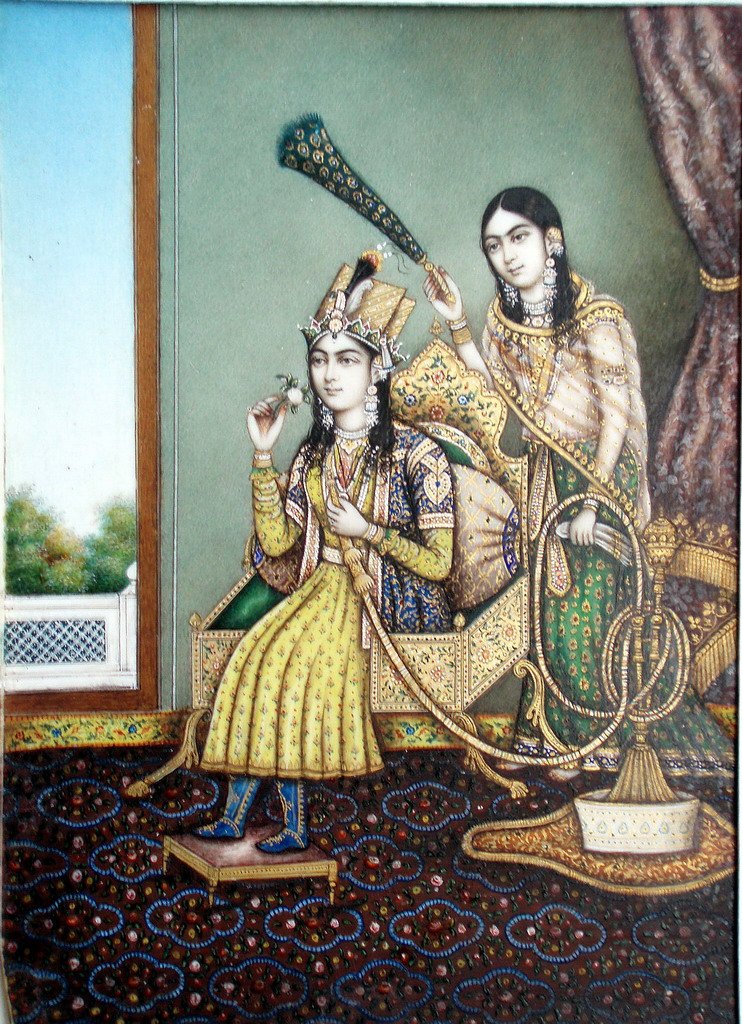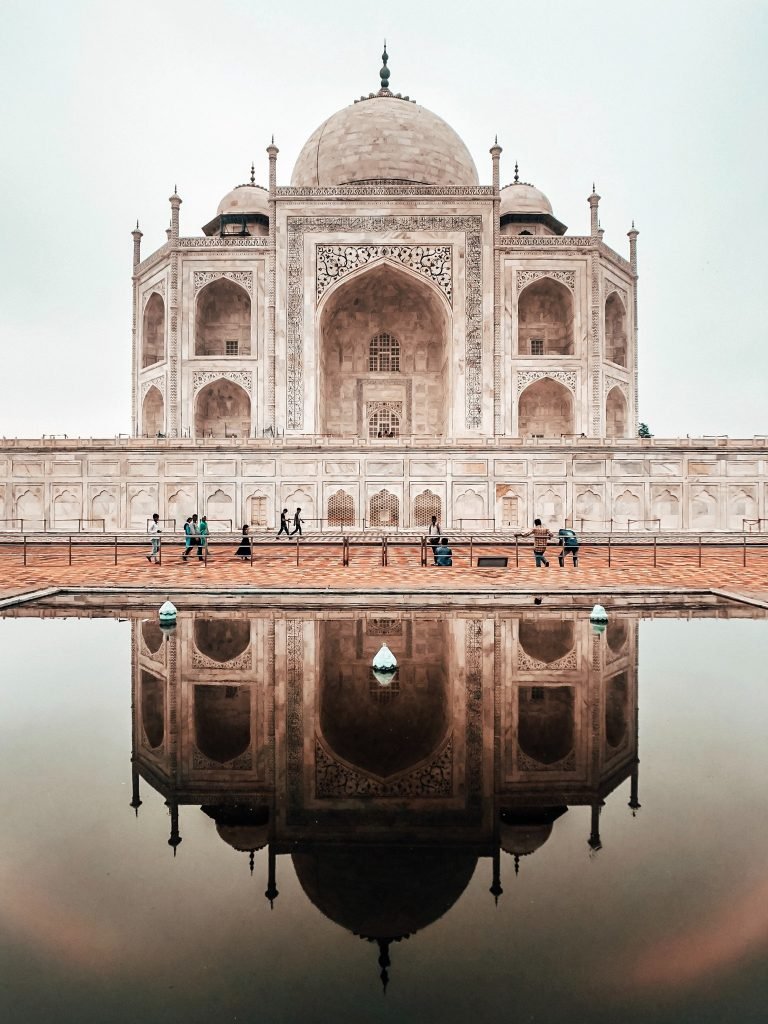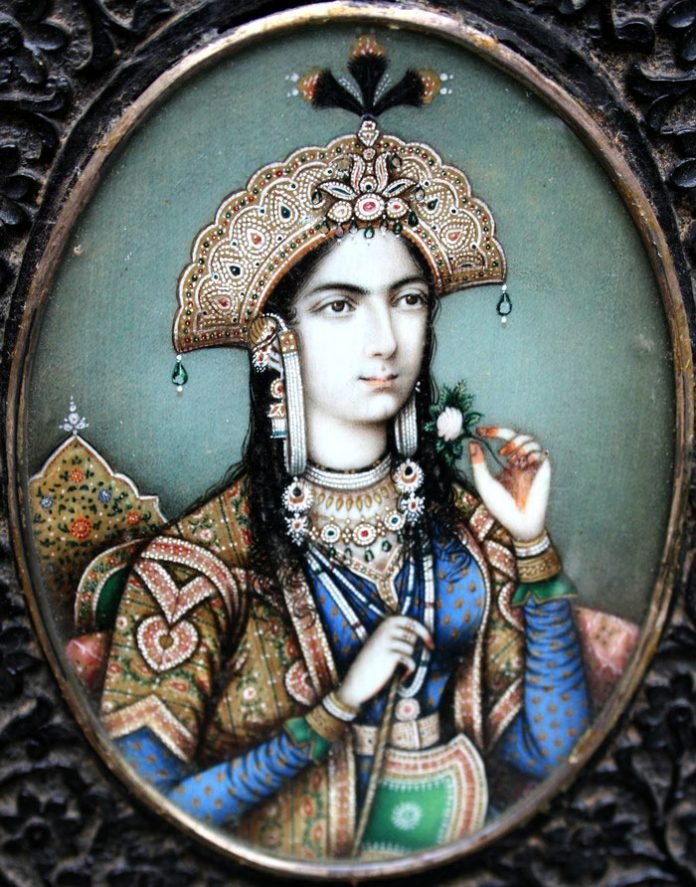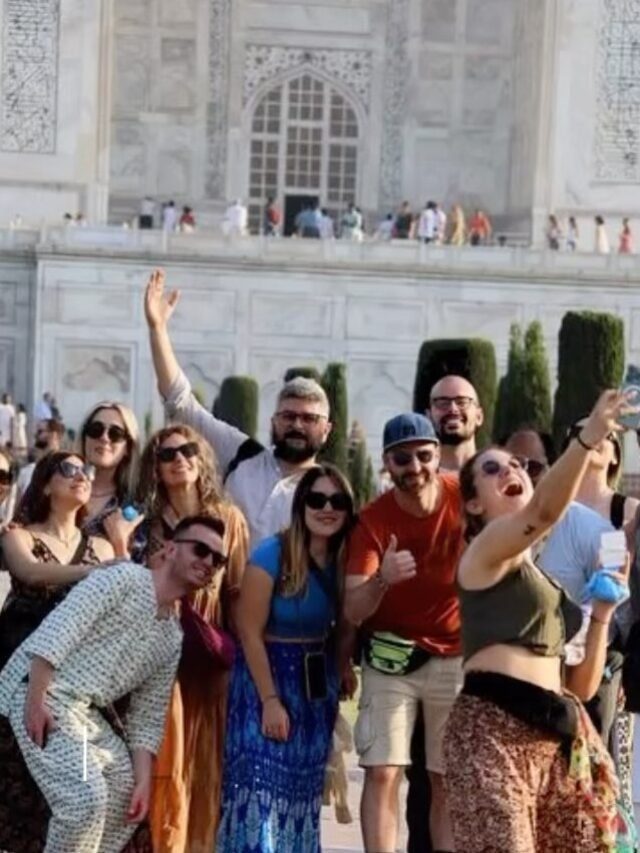Mumtaz Mahal, whose real name was Arjumand Banu Begum, was born in Agra to a family of Persian nobility. Her father was Asif Khan. Mumtaz Mahal died in 1631 in Burhanpur, India (present-day Madhya Pradesh), during the birth of her 14th child, a daughter named Gauhar Ara Begum. Visitors can see Mumtaz Mahal’s real photo at the Taj Mahal Museum in Agra.
Also you like to read
- 10 Taj Mahal fun facts That You Need to Know
- Why is the taj mahal famous?
- Ustad Ahmad Lahori: Master Architect of the Mughal Era
- How were the white marble stones brought from Rajasthan to Agra for building the Taj Mahal?
- Taj Mahal View from Mehtab Bagh: A Spectacular Sight Revealed
- Agra Travel Guide
- Best time to visit agra
“Discover the untold story of Mumtaz Mahal, the woman behind the Taj Mahal. Explore her captivating history and see her real photo..”
Mumtaz Mahal was the chief wife of Mughal Emperor Shah Jahan from January 19, 1628, to June 17, 1631. The Taj Mahal in Agra, often cited as one of the Wonders of the World, was commissioned by her husband to serve as her tomb., Also you can see Mumtaj Mahal original photo below;

The love story of Mumtaz Mahal and Shah Jahan began in 1607 when Shah Jahan saw her at the Meena Bazaar, where she was selling silk and glass beads. It was love at first sight for Shah Jahan, and at that time, she was known as Arjumand Banu Begum. The museum in the Taj Mahal complex displays not only the real photo of Mumtaz Mahal but also the real photo of Shah Jahan, along with images of them together.
“God separated the two lovers, little did He know it would become the talk of the town.”
Their love story has captivated people worldwide, and their images can be found in the Taj Mahal Museum in Agra as well as in the museums in Delhi. To learn more about their story and to see Shah Jahan and Mumtaz Mahal’s real photos, one can visit these museums and explore the rich history of the Mughal era.
Mumtaz Mahal History and How did Mumtaz Mahal Died?
The Taj Mahal, now a wonder of the world, is a stunning 17th-century white marble structure built by the fifth Mughal Emperor, Shah Jahan. He made it as a mausoleum for his beloved wife, Mumtaz Mahal, who died giving birth to their 14th child. Mumtaz and Shah Jahan were married in 1612 in Agra, India.

In their 19 years of marriage, Mumtaz Mahal, also known as Arjumand Banu Begum, they had 14 children. Seven of the children died at birth or at a very tender age. In June 1631, while accompanying her husband to one of his war expeditions, Mumtaz Mahal died from postpartum hemorrhage in Burhanpur on 17 June 1631 while giving birth to her 14th child, after a prolonged labor around 30 hours.
On her death bed Mumtaz Begum asked for 4 promises from the emperor Shahjahan. The 1st promise was that Shah Jahan should erect a monument dedicated to their love. So the world will remember the inseparable love of Shah Jahan and Mumtaz Mahal. Sadly, the second promise was that he would marry again. The third promise was that he would be kind to their children. The 4th and final promise was that her husband would visit the tomb on her death anniversary.
“Mumtaz Mahal’s story continues to captivate hearts as a tale of love, loss, and architectural marvel.”
Mumtaz Mahal Begum was buried temporarily in Burhanpur, until her body was transferred to Agra in January 1632. Construction on the Taj Mahal began in the same month at the location where Mumtaz Mahal was buried in Agra, India. This magnificent mausoleum, built in honor of Mumtaz Mahal, contains the tombs of both her and her husband, Mughal Emperor Shah Jahan.
The Taj Mahal stands as a testament to their enduring love story, which began when Shah Jahan fell in love with Mumtaz Mahal at first sight in the bustling Meena Bazaar. Their love and devotion to each other have made their story legendary, and the Taj Mahal remains a symbol of their inseparable bond.

The Mughal Emperor Shah Jahan, who ruled from 1628 to 1658, built the Taj Mahal to honor his beloved second wife, Mumtaz Mahal, known as the “Chosen One of the Palace.” She died in 1631 during childbirth, after being his inseparable companion since their marriage in 1612.
You should also read This:-
- The Taj Mahal Closing Time: Ensuring a Timely Departure from India’s Iconic Treasure
- Explore Taj Mahal and Agra Fort in a Day: Unforgettable Trip from Delhi
- Uncover Agra’s Abundant Heritage: A Agra one day City Tour
- Agra Travel Guide: Taj Mahal Distance, Top Attractions, Navigation Tips, and Safety Guidelines
- Discover the Mughal Heritage: Overnight Agra Tour from Delhi with Kamal Hotel Stay
- The Oberoi Amarvilas Agra Hotel: Experience the Taj Mahal in Luxury
- Best time to visit Taj Mahal for Photography, Tips and Tour price Guide
FAQ
- Who was Mumtaz Mahal?
Mumtaz Mahal, originally named Arjumand Banu Begum, was a Persian noblewoman who became the chief consort of Mughal Emperor Shah Jahan. Known for her beauty and intelligence, she played a pivotal role in the Mughal court and was deeply loved by Shah Jahan. - What is the history behind Mumtaz Mahal and the Taj Mahal?
Mumtaz Mahal passed away in 1631 during childbirth, prompting Shah Jahan to commission the Taj Mahal as a magnificent mausoleum in her memory. Completed in 1648, it stands as a symbol of their eternal love and is celebrated as one of the world’s most iconic architectural wonders. - Is there a real photo of Mumtaz Mahal?
No, there are no known authentic photographs of Mumtaz Mahal as photography did not exist during her time in the 17th century. However, artists’ renditions and historical descriptions depict her as a woman of exceptional grace and charm. - Why is Mumtaz Mahal significant in Indian history?
Mumtaz Mahal holds significance in Indian history primarily due to her role as the beloved wife of Shah Jahan and the inspiration behind the Taj Mahal. Her tragic death and Shah Jahan’s deep grief led to the creation of one of the most renowned symbols of love and architectural achievement in the world. - Where can I learn more about Mumtaz Mahal?
You can learn more about Mumtaz Mahal by visiting historical sites like the Taj Mahal in Agra, India, where her story is prominently featured. Museums such as the Taj Mahal Museum and other historical archives also offer insights into her life, the Mughal era, and her enduring legacy.
Last Update KW 18/5/22



































